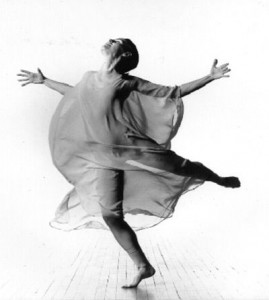In Brooklyn Ballet’s 2013 performance season ballet and street dancers will collaborate and improvise, musicians will play the program’s music live, and hacker collective NYC Resistor will create a visual landscape using body-mapping technology and intricate code.
Artistic Director Lynn Parkerson takes us inside just one of the works in this year’s program.

This season you are doing an improvisational piece that highlights both street and ballet dancers. Can you talk a little bit about why you chose to put these two styles together and what it looks like?
I’ve been working with this mix of dance styles since 2004. I keep finding new ways for them to come together in choreographic terms. Our latest work-in-progress, Quilt, takes the mathematical concept of vectors, a concept shared with us by London-based choreographer Julia K. Gleich, as a road map and set of directives for the dancers to interpret.
The use of vectors as guides for moving is opening new ideas to both the ballet dancers and the street dancers. It’s also underlining the inherent differences in the way they each approach movement with their varied backgrounds. For example, if part of the instruction is to reach the opposite side of the stage in a short period of time, the ballet dancers dart there with purpose and clarity. The street dancers tend to take a more rambling strut. Their ideas about speed are just as different as their ideas about initiation.
What is the music like for this piece and how did you select it?
Gil Morgenstern, Reflections Series International, selected the music for Quilt. I’ve worked with Gil for a few years, and he always brings something interesting to the table—something that complements the work in the studio. For this piece, he is also comparing two styles by performing alternating partitas from Bach and Barkauskas, composers from different centuries.

How open are you to choosing music for pieces that you set on the company?
I’m open to anything!
What is your choreographic process like, and how much do you allow the dancers to have a say in the process?
It depends on the piece. We perform some repertory, both contemporary and from the classical canon, that are completely choreographed and set on the dancers. Other works have lots of room for individual choices and spontaneous interpretation. In this program we have works where both of these choreographic methods are represented. Tracing Back, our new digital collaboration, is a “set” piece. Quilt and Spiders, Cooks and Mood Swings, were both explored by the dancers in the studio during creation. Quilt in particular will still be an improvisational exploration in performance.
What is your view about how music relates to dance—and to choreography?
Music for me is often a catalyst or inspiration for a piece, however I like to keep the dance and music independent of each other as I’m creating the movement material. If it is a set piece I like to look at the score and get to know the music very, very well. I always remember my time at the Merce Cunningham studio where we were not allowed to use music. It is liberating, and you get to know movement material for its own sake. You have to ask yourself: is the movement interesting without music?
Performances are February 28, March 1, 2 & 3 and March 8, 9 & 10.
Purchase tickets or read more about this year’s performances.




